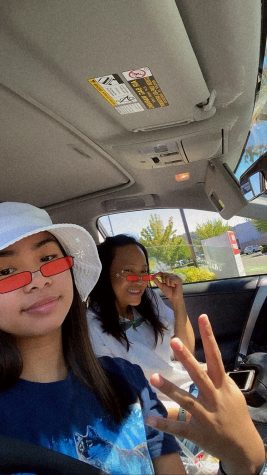A Tale of Two Parts of the City
May 17, 2021
Before coming to Seattle Prep, I had rarely set foot in North Seattle. Other than the CYO cross country meets in Lower Woodland and the occasional family trips to Seattle tourist locations, I was unaware of any parts of the city past the downtown skyline.
I grew up in and still live in South Seattle—called the “southend,” “soufend,” or the “souf” by locals. Jefferson Park, Rainier Beach Community Center, and Southcenter Mall defined my childhood. Three authentic taco trucks in the neighborhood, middle school events with injera and chilaquiles, and delectable Filipino cuisine at home allowed me to instantly explore other cultures while keeping in touch with my own. When the time to go to high school arrived, my worldview expanded, literally. I chose to attend school on the opposite side of the city, and with it, came the weight of cultural differences and feeling outcast from both familiar and unfamiliar worlds.
From K-8, I attended St. Edward, a small, low-income school in Seattle’s Rainier Valley. Then, freshman year, I ventured into uncharted territory to Seattle Prep in Capitol Hill. I remember during a karaoke Olympic Week event, a group performed “Take Me Home, Country Roads” by John Denver. The bleachers of class colors were swaying and belting the words, and though I happily swayed along, I sat perplexed in a wave of sophomore green. I had never heard this song before. In the southend, St. Edward, and at home, country music is rarely played. The whole school seem to bond during these two minutes, and I felt out of place not able to share this moment.
Culture shock continued through my high school career. At Prep, I used a microscope for the first time in my sophomore biology class, I saw my peers eat salad for lunch, and I saw students wear brands such as Golden Goose and Brandy Melville for the first time. At St. Edward, kids ate their ethnic cultural food or Cup O’ Noodles for lunch, and sported their favorite Jordans on the daily. At Prep, I also found myself code switching from southend slang, as I would leave words like “giggin,” “further,” and “janxy” at home. There’s even a handshake that southend kids do that I found to be nonexistent in the Prep community.
Becoming an ethnic minority came with transitioning schools as well. In the Southend, immigrants and people of color are the overwhelming majority. In my 8th grade class of nineteen, there was one Caucasian. On my street, two of the fourteen houses have Caucasian families. When I got to Prep, I found myself being one of the few Asians and POC in the school. When I looked around the classroom, I saw that 1/4 or less of the room were students of color. As much as I’ve assimilated into Prep and feel the community aspect, it’s still tough at times to look past color and not feel like I’m different from the rest.
Representing both neighborhoods to the other became a weight. When I mention I go to Seattle Prep in the Southend, people say that it’s too expensive and call me “white-washed.” When I told a classmate in my driver’s ed class that I go to Prep, they pinched their nose, made a sour face, and said that it is full of rich, stuck-up white kids. “That’s not entirely true,” I answered, but it was difficult. Having not made friends from my neighborhood in years, I feared they wouldn’t stick around if I defended my school. Conversely, many people have the implicit bias that people from the Southend, the “ghetto of Seattle,” are uneducated, dangerous, and financially unstable. St. Edward closed last year due to low enrollment, so as their second to last alumni member to attend Prep, I feel strongly obligated to represent this community every day that I go to school and show that the Southend is more than its stereotypes.
Despite the difficult school transition, I believe that I’ve hit the jackpot with my high school choice, as it came with one-in-a-lifetime positive impacts. I carry a wider perspective from being at Prep, as I’ve now listened to a variety of country, empathized with my Caucasian middle school friend who was as an ethnic minority, and got to hear the diversity of thought from my peers in discussion around social issues. I have more cultural awareness and have learned not to judge others based on where they’re from. I carry more gratitude for the opportunity and honor that I have of receiving a college prep education and look to hold these formed values in college and beyond. Most of all, through this experience and learning process, I carry an increased pride for being a Panther but also for my roots. You can take the girl out of the Southend, but not the Southend out of the girl!


